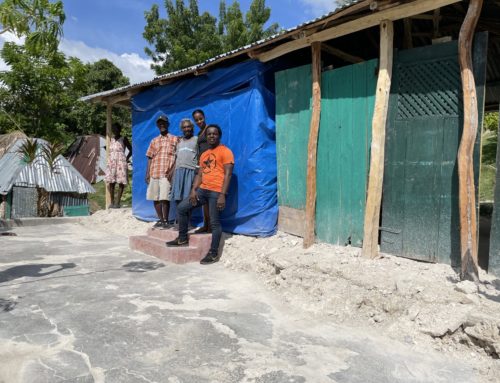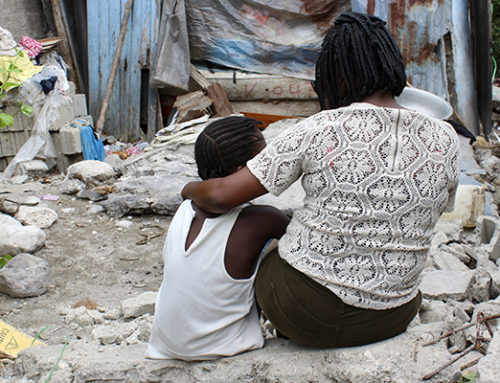The history of slavery is a large and untellable story, full of tragedy and cruelty that spans both centuries and continents. Although it is difficult to pinpoint the exact year that slavery began, historians can trace the roots of this inhumane practice back roughly 11,000 years. Keep reading to learn about the origins of slavery, how it developed across ancient cultures and what you can do to help end slavery for Haitian children.
The Origins of The Slavery Practice
The precise beginning of slavery is difficult to track because its origins predate historical recording and the written word. Due to the sociological makeup of the groups, we know that slavery wasn’t a part of hunter-gatherer societies, so the first identifiable evidence of slavery comes from the Code of Hammurabi out of Mesopotamia. This ancient text refers to slavery as a common practice throughout the region which had been in place for thousands of years at the time it was written.
Slavery Throughout the Ancient World
The practice of human slavery grew as the world became more civilized and organized cities and farms were developed. Sumer or Sumeria is still thought to be the birthplace of slavery, which grew out of Sumer into Greece and other parts of ancient Mesopotamia. The Ancient East, specifically China and India, didn’t adopt the practice of slavery until much later, as late as the Qin Dynasty in 221 BC. Historians debate whether or not the practice of slavery in India existed before this time, but many believe argue against its existence as there is no word in ancient Sanskrit that can be translated as “slave.”
The Life of a Slave in Ancient Times
Slavery in ancient times typically came about as a result of debt, birth into a slave family, child abandonment, war, or as a punishment for crime. At the outset, the slave trade wasn’t very popular and was certainly not a booming global business. Rather, slavers would often seek out a buyer who could use the specific skills of a slave, matching supply with demand on a local and personal level. According to historical texts, the lives of slaves in ancient times were typically better than that of peasants in the same era, as they had regular care, food, shelter and clothing. Slaves rarely attempted to run away unless their masters were atypically cruel.
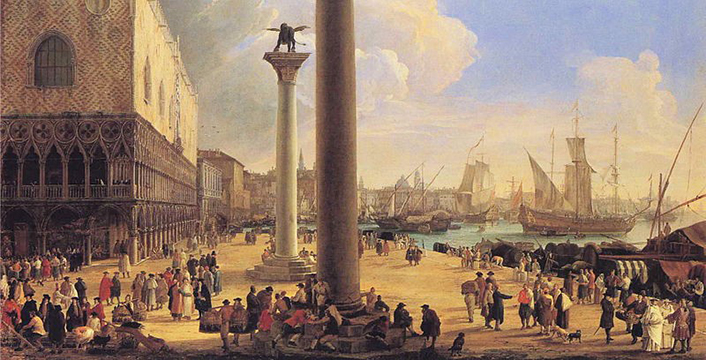
The Middle Ages
Throughout the Middle Ages, (defined by historians as a three-part time period between 500 AD and 1500 AD) the practice of slavery changed dramatically as global warfare, raiding and conquering spanned across continents. This led to chaos and confusion as the citizens of conquered regions were taken as slaves and transported across many miles to work as slaves for their captors.
Medieval Slavery in Europe
King Charlemagne is responsible for uniting large parts of West and Central Europe at the outset of the Middle Ages. This unification came about through war and violence and many of his campaigns involved taking slaves and selling them to the highest bidders. Throughout his reign, European slaves became wildly popular throughout Muslim countries, marking the true beginning of the global slave trade. Throughout this period in history, Vikings were also taking slaves across Europe, concentrating heavily on The British Isles. Additionally, Spain and Portugal were in an almost constant state of Holy War between Muslims and Christians, leading to many women and children being taken into slavery in the name of God or Allah.
Medieval Slavery in Asia
Throughout the Middle Ages slavery was also taking root in Asia as Islamic invasions of India resulted in the enslavement of hundreds of thousands of Indians. One historical record shows that in the year 1001 the armies of Mahmud of Ghazna conquered Peshawar and Waihand, capturing and enslaving roughly 100,000 children and young people.
During this same time period in China, documents show that royals from the Tang Dynasty purchased many European and Jewish slaves. The soldiers and pirates who serve the Tang Dynasty also took countless slaves in raids on Korea, Turkey, Persia and Indonesia as well as thousands of slaves taken from indigenous Aboriginal tribes.
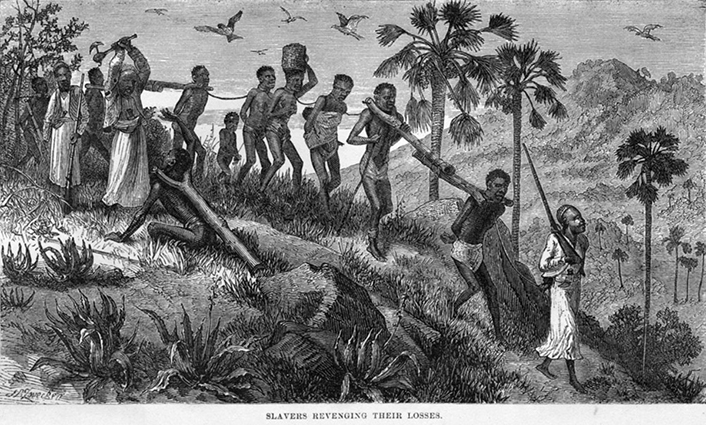
Slavery in the Americas
The story of the American slave trade is the first chapter in the history of slavery where most of us already have some familiarity. Whether it be from graphic films on the transportation of Africans aboard slave ships or your high school American history class, most adults are aware of the origins of slavery in the United States. The long story of slavery has not yet come to a close as many, including children, still find themselves enslaved.
The Origins of American Slavery
The first slaves were brought to the Americas in 1619, when 20 men from Africa were brought to Jamestown, VA. Historians are not sure whether this was the true beginning of the legal slave trade in the colonies. Indentured servitude already existed in the region. Roughly 60 years later, via the Royal African Slave Company, records show that the slave trade was booming in the British Colonies, and colonists began to acquire slaves in larger numbers. Evidence suggests that the main reason for this dramatic increase was a sharp decline in the availability of indentured servants.
Slave Concentration Throughout the Americas
Despite what you likely know about slavery in the Americas, you may not know that the majority of African slaves were concentrated in the Caribbean to work on plantations. European colonies depended on African slaves on the islands to produce their sugar and coffee. Additionally, many African slaves were sold to owners in both Brazil and the Spanish Americas for both field and household work.
The Journey from Africa
The journey from Africa to the Americas was a horror that many did not survive. The ships were tightly packed, low on food, and without proper sanitation. This led to a rapid spread in fatal diseases such as dysentery, fever, and smallpox, killing both the Africans and the ship’s crew. Death was commonplace on the slave trade, and when a man or woman passed away, their bodies were simply tossed into the ocean. This was an additional point of shock for the Africans, as they believed that death and burial should be handled with care and honor.
Depending on the origin and final destination of the slave ship, this journey could take anywhere from three weeks to several months. Records estimate that between 10 and 20 million Africans were brought to the Americas in this inhumane fashion, although many were cast into the ocean along the way, a tragedy too horrifying to wrap your mind around.
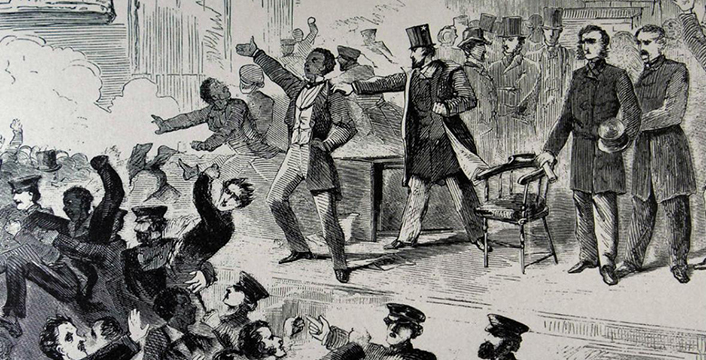
The Abolitionist Movement
Slavery is an appalling practice that has existed since the origins of human history. Although at many points in history, liberators have worked to free specific groups of people, the Abolitionist Movement was different, as it aimed to put an end to slavery as a practice.
The Roots of the Abolitionists
Some of the first countries to do away with slavery as a practice were located in Western Europe, around 1500. Many European countries were careful not to use slavery in their homelands, but relied heavily on slaves to build their empires abroad. The next step in the abolitionist movement was the ending of the slave trade globally. Slavers who were caught transporting slaves across the ocean were tried in court, and those captured were set free. However, there were still large numbers of slaves already in place in the Americas, and the profitability of the work they provided made them a valuable commodity to their owners.
The American Civil War
At the time of the American Civil War, there were more than 4 million slaves working in the United States, 95% of whom were in the Southern states. The major political issue leading up the beginning of the Civil War was the expansion of slavery to the West. Northern abolitionists believed that if they could stop the spread of slavery, they could end the practice altogether.
In 1860, Abraham Lincoln won the presidency, and the Southern states seceded from the Union shortly after, forming the Confederacy. The Confederate States of America were centered around the preservation of slavery, while the Northern Union was focused on preserving the country, as well bringing an end to slavery.
The Emancipation Proclamation and Beyond
With the stroke of a pen, President Lincoln changed the war by signing the Emancipation Proclamation, changing the status of all enslaved Americans from bondage to freedom. This meant that although slaves were still working throughout the South, if they could escape to the North, they would be legally free. Many slaves were able to escape to northern states using the Underground Railroad. In 1865, the Union regained control of the Confederate States, and the slaves in those areas were formally freed. Many of the freed men joined the American Army and Navy to ensure their free status.
Although legally free, the lives of black Americans did not immediately improve. The battle for racial equality is one that is still ongoing in the United States, a reminder of our dark past.

Modern Day Slavery
Sadly, even through the hard work of abolitionists the world over, the end of slavery didn’t come in the 19th century. Modern or contemporary slavery still exists across the globe, often in places you wouldn’t expect. Experts estimate that there are roughly 40.3 million enslaved people currently in bondage.
What Does Contemporary Slavery Look Like?
There are many forms of modern day slavery, all of which involve people being forced to work against their will. This can take the form of prostitution, physical bondage, forced labor, human trafficking, debt bondage or simply being born into slavery. Researchers estimate that worldwide these numbers breakdown to 25 million in forced labor, 15.4 million in forced marriages, 4.8 bin sexual exploitation and more than 10 million child slaves.
The most vulnerable among us are always the most likely to become enslaved. Women and children are often forced into slavery against their will because they have no other options or resources with which to fight back. Other times, migrants and refugees are sold into slavery when seeking asylum, as is currently the case with thousands of Rohingya Muslims currently working in the Thai fishing industry.
Countries with the Highest Concentration
Research from the Global Slavery Index shows that North Korea, Uzbekistan, Cambodia, India, and Qatar have the highest percentage of slavery among their population. In North Korea roughly 4.37% of the population is enslaved, most of these by the North Korean government who force them into slavery, even selling them to work abroad in Russia, China and even the United States. In India, modern day slavery often involves debt bondage, where individuals are forced into to slavery to pay off debt, either their own or from previous generations.
How You Can Help End Slavery in Your Community
One way you can help stop contemporary slavery is by knowing and understanding the signs. For example, if a person cannot leave their job, reports low wages, isn’t properly cared for or never speaks for themselves, they may be victims of slavery. For children, look for a lack of access to education, poor nutrition, shabby clothing, and lack of playtime. If you notice children’s beds or clothing in factories or businesses where they don’t belong, this is an indicator of child slavery. If you recognize any of these signs, call the National Human Trafficking Hotline at 1-888-373-7888 to report it.
Join Us to Help Enslaved Haitian Children
In the nearby island of Haiti, many children are caught in a system of slavery known as restavek. Haiti is one of the poorest countries on the planet, and many Haitians are starving and unable to care for their children. In these situations, they are left with no option but to send their children to live with wealthier families to survive, where they become slaves in the family tasked with their care. These children spend their formative years working long hours with little food, playtime, or attention from the adults around them.
Restavek Freedom is one of the top charities working to end child slavery in Haiti. Through child advocacy, education, and intervention our teams are giving Haitian children the chance to learn, play and thrive. You can partner with us through child sponsorship, creative fundraising and more. Help us end slavery in our lifetime.








